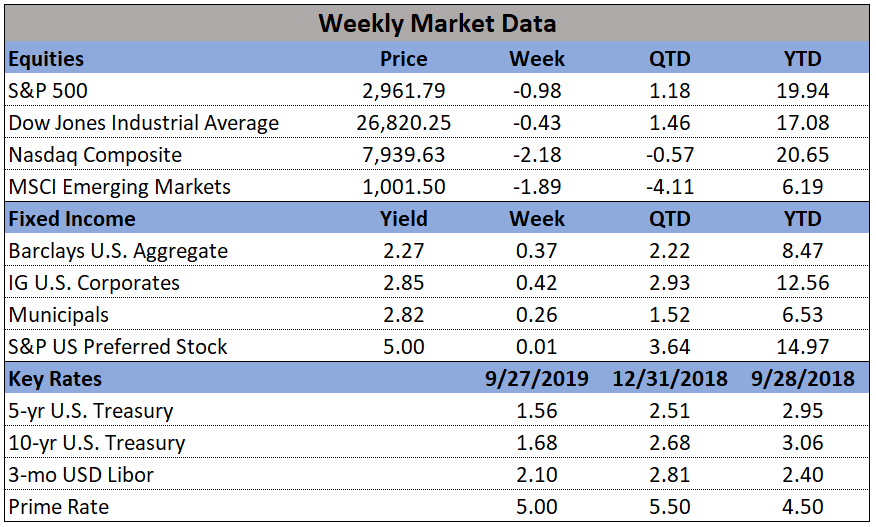Every economist, investment advisor, and person at the bar has an opinion on where the economy is headed. Regardless of education or experience, at least half of them will be wrong. John from Moody's Pub may call the next recession months in advance, while Joseph Stiglitz, Nobel Prize winning economist, could get it completely wrong. It could just as easily be the other way around.
When the hammer falls and the economy rockets skyward or nosedives, winners and losers alike will look back to find the indicator that predicted the entire show. Decades of economic research and back-testing has declared these 5 indicators as "Leading Indicators", meaning changes in these indicators are predictive of changes in the economy.
1. Stock Market
Though not the most reliable indicator, the stock market is by far the most commonly used gauge of economic health. Because stocks are priced based on their future cash flows and growth opportunities, high flying markets likely represent confidence in the underlying economy. Businesses struggle to keep cash flows high and growth rolling during an economic contraction, so the value of their stocks is likely to decrease if analysts and business owners are forecasting a recession.
Despite the believable theory, there are several reasons stock market predictions should be accepted with a grain of salt. First, the stock market can be manipulated. The Federal Reserve uses "quantitative easing", manipulating the supply of securities by buying and holding large amounts of them, to keep markets healthy despite underlying unrest. Large banks and funds can also affect stock prices via high volume trading, analyst reports, and credit ratings. Second, the markets are prone to "bubbles", which are times when the rationality of investors is overwhelmed by the need to buy buy buy. In these cases, the stock markets can throw a false positive as the economy declines.
2. Manufacturing Activity
This indicator is pretty straightforward: if companies are expecting a crazy year of sales, they will order more. If all companies are expecting crazy years, then they all order more. These orders are filled by manufacturing companies, whose output is a direct reflection of the health of their clients. If manufacturers are producing like crazy, it bodes well for the economy. If they cut back, it signals a slowdown is rippling along the supply chain.
Manufacturing also benefits GDP, with rising output reflecting increasing demand for consumer products and, therefore, a healthy economy.
The drawbacks of Manufacturing Activity as an indicator ties in directly to the next leading indicator: Inventory Levels. There is a chance that companies are ordering more in preparation for high demand, without that demand actually manifesting. In this case, the ordered goods will sit in inventory until demand rises. The result is a false positive signal from Manufacturing Activity.
3. Inventory Levels
Inventory levels is a more complicated signal, but effective nonetheless. High inventory levels can mean two things: either that companies are stockpiling goods to service high demand, or that demand has decreased drastically and left companies overstocked. This indicator is best when combined with Manufacturing Levels, as mentioned above. If Manufacturing and Inventory Levels are rising at the same rate, one should exercise caution when using these signals to make decisions. If Manufacturing is increasing but Inventory is remaining constant or declining, then the combined signal is economy-positive. If Manufacturing is decreasing and Inventory is increasing, this signal is economy-negative. If both are declining, this is also negative.
4. Retail Sales
Together, Manufacturing Activity, Inventory Levels, and Retails Sales capture the health of the entire supply chain. Of the three, Retail Sales is the most simple and most important indicator because it represents the nexus point between consumers and companies. If consumers are buying more, they feel good about the economy, and if companies are selling more, it makes them feel good about the economy. As a result, Retail Sales measures both consumer and business sentiment.
Retail Sales also directly affect GDP, which increases the value of the home currency, drives growth, and funds the local government via increased taxes.
Finally, an increase in Retail Sales stimulates the economy by providing companies with more capital, which they use to employ more workers, which inevitably provides more capital to consumers. The entire wheel on which a capitalist economy turns is driven by how much consumers are buying. Therefore, an increase in Retail Sales is almost always an economy-positive signal.
The only caveat to Retail Sales is how consumers are paying for the items they buy. If purchases are financed with debt (as they are more and more now), Retail Sales may hide the risk of rising debt, which could force a recession without triggering any of the supply chain indicators.
5. Housing Market
The final leading indicator is the housing market, which is reasonably self-explanatory. When a home-buyer locks in a 30-year mortgage, they are betting on several risky factors. They are betting that they will remain employed or otherwise able to fund the obligation, while at the same time hoping the value of their house will increase. An increase in new home projects, home-buyers, and rising housing prices are all signs of a flourishing economy.
The housing market also has the most widespread effect in the event of a recession. Homeowner wealth decreases, fewer construction projects leads to unemployment, fewer property taxes reduces government income, and homeowners will struggle to refinance or sell their homes, forcing them to foreclose.
Conclusion
Rather than making a shot in the dark when it comes to forecasting the health of the economy, cite one or more of these leading indicators to back your claim. Despite our best efforts, history tends to repeat itself, and while it won't make you right every time, it is always more effective to support your argument with cold hard facts.








